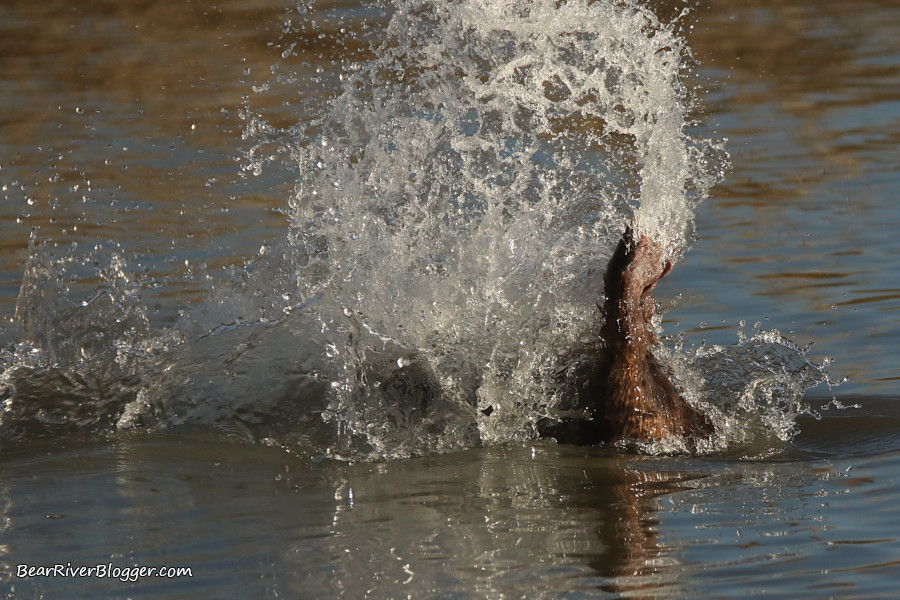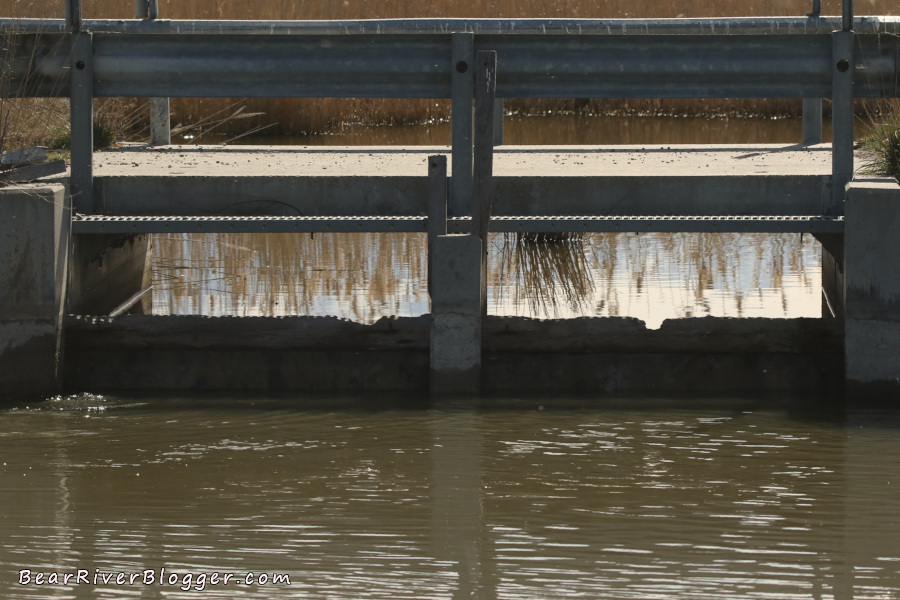I don’t know about you but mentioning the word beaver in the same sentence as the Bear River Migratory Bird Refuge seems, well, a bit odd to me to say the least.
When I think of beavers my mind immediately conjures up images of a lush high mountain valley meadow caressing a small pond and a winding creek running down the middle that’s nicely dressed up with lots of aspen trees and willows nearby, not the barren alkaline mudflats and shallow wetlands on the eastern shores of the Great Salt Lake.
That ideology of a perfect natural setting for beavers started to fade a little, however, last fall while I was on the south end of the Bear River Migratory Bird Refuge auto tour route and I spotted something unusual across the canal while photographing a flock of American white pelicans nearby.
After taking several photos of the unidentified object, images I definitely won’t post here as the scene wasn’t very pleasant, I later confirmed my initial gut feeling was correct, it was indeed a dead beaver laying upside down on the barren mudflat.
It struck me as quite odd at the time and rightfully so I will admit.
I eventually wrote the incident off as a fluke, talking myself into believing it was just a random occurrence of some kind that will never, ever happen again as common sense states beavers just don’t live in wetland habitats on the shores of the Great Salt Lake, right?
But that very scene has been stuck in the back of my mind from that moment on, coming to the forefront each and every time I drive past that particular section of the auto loop as I continually wonder just how a beaver ended up on the south end of the bird refuge, only a few short miles from the salty waters of the Great Salt Lake.
I’ve been coming to the Bear River Migratory Bird Refuge for several decades now and that was the first time I have ever seen a beaver on the refuge, dead or alive, so you can understand my confusion as well as my curiosity about the situation.

Fast forward to a couple weeks ago when I was on the north leg of the bird refuge auto loop and I spotted not one but two distinct and separate adult beavers swimming up the canal that parallels the gravel road.
At first, I thought I had found the world’s largest muskrat as the initial beaver was skittish and quickly swam upstream, making it hard to identify until I came home and looked at the pictures.
The second critter that was seen swimming upstream not 5 minutes later was most definitely a beaver as it stood its ground, obviously agitated with me by its tail aggressively slapping the water each time before the critter dove while I stood on the roadway with my camera in complete shock of what I had just found, not one but 2 beavers on the bird refuge.
Beavers will slap the water with their tails as they dive to warn other family members, namely their offspring, commonly referred to as kits, of any potential danger nearby.
This would indicate there were indeed more beavers nearby, possibly new offspring and/or last year’s brood somewhere in the vicinity despite me not seeing any other beavers at the time but, honestly, I really wasn’t looking for more as I never in a million years thought I would find one, let alone two, on the bird refuge auto tour route in the first place.

Historically, beavers are native to most of North America and found throughout Utah, including the Bear River Migratory Bird Refuge and surrounding private wetlands from what I had just witnessed.
This was confirmed to me a couple days ago when a friend of mine mentioned he had trapped beavers on some of the surrounding duck hunting club wetlands 40 years ago.
All in all, beavers have apparently been in the Bear River delta and adjacent wetlands for a very long time and how I’ve managed to miss them all these years until now is a mystery to me.
One thing I did find out about beavers on the Bear River Migratory Bird Refuge a few days ago while at the visitors center is, that despite them being wildlife, beavers are not necessarily “welcomed” on the refuge, which surprised me at first until I was told the reason why.
Simply put, beaver’s teeth never stop growing so they need to chew on wood to keep them worn down but being a wetland there are no trees on the Bear River Migratory Bird Refuge to speak of, and soft cattail stalks and other aquatic vegetation beavers on the bird refuge consume as food offer very little in the way of tooth maintenance.

That forces the beavers to find wood, any kind of wood that is, to help wear down and maintain their teeth, leading them to chew on the wooden boards used to control water flowing through the large concrete head gates, causing damage to these boards that help control the water flows through various parts of the refuge wetlands.
Even though beavers are “wildlife”, per se, they are considered a nuisance and do cause some damage to the refuge and surrounding wetlands so, interestingly enough, they aren’t as welcomed as you and I might think.
If you are a nature enthusiast or a birdwatcher like I am, I offer you to head on over to our subscribe page and sign up for email notifications for future blog posts similar to this one where we share our love for nature, both on and off of the Bear River Migratory Bird Refuge through our photography and the written word.
For those of you who use social media, I have also started a Bear River Blogger Facebook page you can follow where I post small and more frequent updates, photos, and other things of interest about the famous Bear River Migratory Bird Refuge and other natural places I photograph and write about here on this website.
(Song Of The Marsh Wren. For short nature photography tips and interesting stories about the natural world around us, subscribe to our Bear River Blogger channel on YouTube for videos and updates from our travels while out in nature, both on and off of the famed Bear River Migratory Bird Refuge.)



